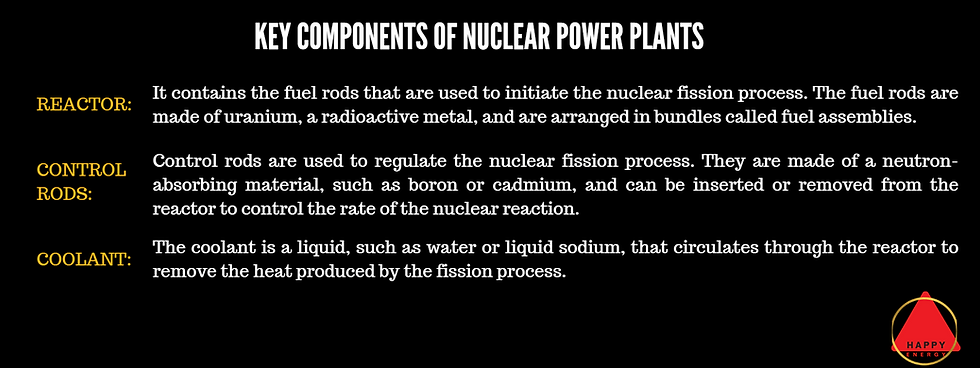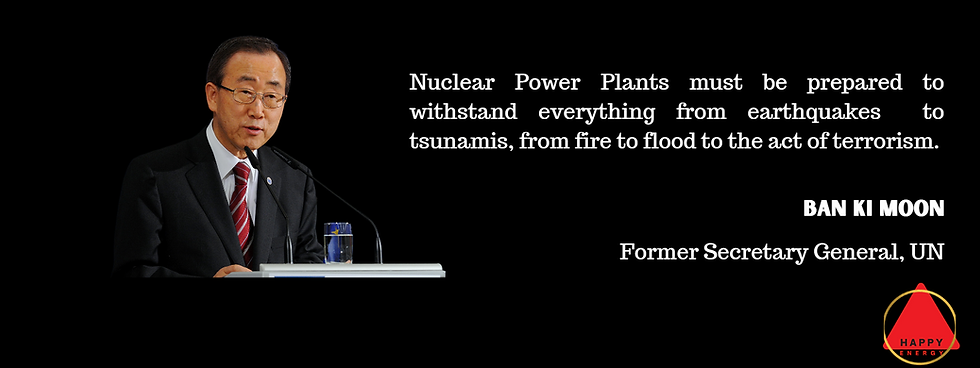Nuclear power is one of the most controversial forms of energy generation in the modern era. The debate about its safety and potential hazards has been ongoing for more than 70 years now.
Despite the many benefits of nuclear power, there have been a few major catastrophic nuclear accidents that have had significant and long-lasting effects on the environment and public health.
The present blog is in continuation of the previous blog titled Nuclear Energy (Part-I) and is going to be divided into two main sections.
A basic introduction to nuclear energy and associated nuclear power technology.
Major nuclear accidents and their Impact on the world.
Technology Of Nuclear Power Plants:
Nuclear Power Plants:
Nuclear power plants work by harnessing the energy released from the splitting of atomic nuclei in a process called nuclear fission. The fission process produces a limitless amount of heat, which can be used to produce steam that drives turbines, ultimately generating electricity.
It was developed as an attempt to put nuclear energy for peaceful purposes after the Hiroshima and Nagasaki Bombings.
The following infographic enumerates the key components of nuclear power plants.


The process of generating electricity in a nuclear power plant can be summarized in the following steps:
The nuclear fission process begins when the uranium atoms in the fuel rods are bombarded by neutrons. This causes the uranium atoms to split into smaller nuclei, releasing a large amount of heat in the process.
The heat produced by the fission process is absorbed by the coolant, which then circulates through the steam generator.
In the steam generator, the heat from the coolant is used to produce steam, which is then directed towards the turbine.
The steam drives the turbine, which generates mechanical energy that is transferred to the generator.
The generator converts the mechanical energy from the turbine into electrical energy, which is then distributed to homes and businesses through the power grid.
Major Nuclear Accidents & After-Effect
Three Miles Island Accident (1979)
The Three Mile Island accident was a nuclear accident that occurred on 28 March 1979, at the Three Mile Island Nuclear Generating Station in Pennsylvania, United States. The accident occurred due to a combination of equipment malfunctions and operator errors, which led to a partial meltdown of the reactor core.
The after-effects of the Three Mile Island accident were relatively minor compared to other nuclear accidents, with no immediate fatalities or significant release of radioactive material. However, the accident led to a loss of public trust in nuclear power, and it has had a significant impact on the regulatory environment surrounding nuclear power in the United States.
Chernobyl Disaster (1986)
The Chernobyl disaster was a catastrophic nuclear accident that occurred on 26 April 1986 at the No. 4 reactor in the Chernobyl Nuclear Power Plant, then located in the Ukrainian SSR of the Soviet Union. The accident occurred during a late-night safety test, and it was caused by a combination of design flaws and operator errors. The explosion and subsequent fire released large amounts of radioactive particles into the air, which spread over a large area of Europe.
The after-effects of the Chernobyl disaster were severe and long-lasting. The immediate effects of the disaster were felt in the surrounding areas, where hundreds of thousands of people were evacuated. The long-term effects of the disaster are still being felt today, with a significant increase in the incidence of cancer and other radiation-related illnesses in the affected areas.
Fukushima Disaster (2011)
The Fukushima Daiichi disaster was a nuclear accident that occurred on 11 March 2011, after a 9.0 magnitude earthquake and subsequent tsunami struck Japan. The earthquake caused a loss of power at the Fukushima Daiichi nuclear power plant, and the subsequent tsunami caused severe damage to the plant's cooling systems. This led to a series of explosions and releases of radioactive material.
The after-effects of the Fukushima disaster have been significant, with a large area around the plant being evacuated. There have been reports of increased levels of radiation in the surrounding area, and concerns about the long-term health effects of the disaster.
Major Effects After Fukushima Disaster
Fukushima Disaster was a turning event in the field of nuclear power plants as it leads a lot of countries to revisit their approach to the field of nuclear energy.
Many countries like Germany and Switzerland decided to phase out nuclear power plants completely based on safety concerns. Increased safety features led to increased costs now for operation and installations.
Anti-nuclear movements picked up the pace and this led to policy changes.
Many countries started to look out for alternative renewable energy sources that can help replace both nuclear and thermal and also meet climate-related commitments.

Nuclear accidents are rare but catastrophic events that have the potential to cause significant harm to the environment and public health. The after-effects of these accidents can last for decades or even centuries, and the long-term health effects are still being studied. Despite the risks associated with nuclear power, it remains an important source of energy for many countries around the world. It is essential to continue to develop safer and more reliable nuclear technology to minimize the risk of future accidents.


Lovely Article.